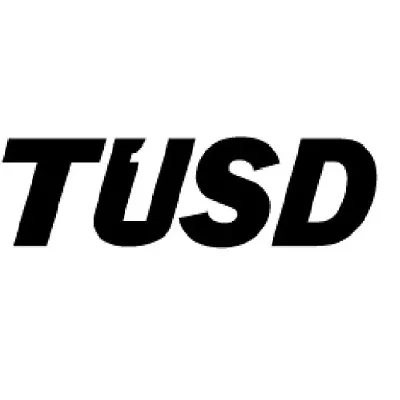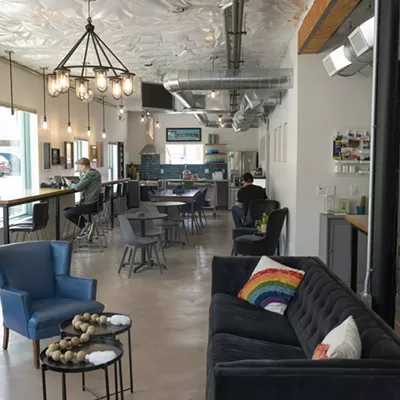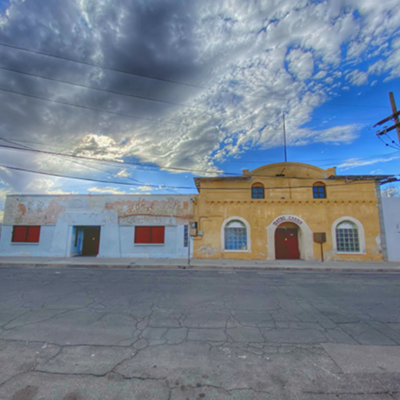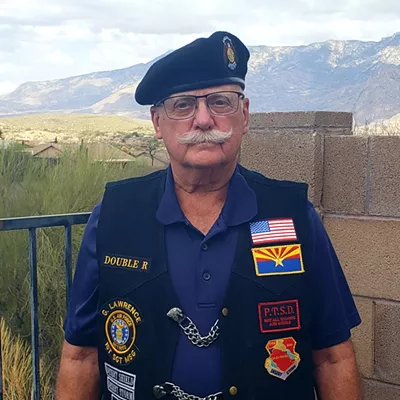The task is complicated because this is the second plan PAG has released in the last three years. The regional agency, with a board of elected officials from the area's five municipalities along with Pima County and a representative from the state's Transportation Board, also adopted a plan in 1998. That version, prepared at a cost of almost $1 million, concluded that with three tax increases, metropolitan Tucson could afford $5.6 billion in transportation improvements by 2020.
Of this amount, $3.3 billion was for roads, $1.4 billion for transit, and the remainder for bicycles, pedestrians and miscellaneous projects. That money was going to add 365 miles of lanes to existing major streets, build 100 lane miles of new streets, install five grade-separated interchanges and construct 610 miles of bicycle facilities, as well as 740 miles of sidewalks.
The 1998 plan indicated $3.9 billion would be raised from existing gas and other transportation taxes. To balance the budget, $1.7 billion needed to be generated through three new sources: a quarter-cent sales tax increase devoted solely to transit, a 5-cent-per-gallon increase in the gas tax, and a $2,500 impact fee on every new home built.
Then some unexpected things happened. The federal government significantly raised its financial support through the 1998 Transportation Equity Act for the 21st Century, or TEA-21 for short. After negotiations with state officials, PAG was able to snag 40 percent more federal money for the Tucson area. The state also substantially increased its own funding for the PAG region.
These increases, combined with other projected revenues, meant that without raising taxes, the Tucson area is now expected to have $6.6 billion available for transportation over the next 25 years. Thus, there could theoretically be enough to complete all of the projects endorsed by the 1998 PAG Regional Transportation Plan and have $1 billion left over to spend between 2020 and 2025.
Sound too good to be true? It is. According to the latest PAG plan, "Although the updated revenues through 2025 show significant increase overall, revenues still fall far behind anticipated needs. Continuous regional growth, coupled with the current unmet needs, contributes to the anticipated shortfall."
In more straightforward terms, the 1998 plan was able to implement only 60 percent of the total transportation projects local officials said metropolitan Tucson simply had to have. The new plan, including the tax increases, raises that to 80 percent by increasing expenditures on roads from $3.3 to $5.2 billion and adding an extra $900 million for transit.
Planners also say the conservative cost estimates contained in the 1998 plan were not as accurate as they could have been, especially for the maintenance of roadways. "We made a more concentrated effort on operation and maintenance costs this time," says Cherie Campbell, transportation planning director for PAG. "They may not have been fully covered in the earlier plan."
A second problem: construction cost estimating, or guesstimating, as it is often labeled. For proposed roadway widening projects, especially those that require obtaining right-of-way before work starts, the projected figures can vary wildly.
Two examples: Four years ago it was assumed that widening Cortaro Farms Road from two to four lanes from I-10 to Thornydale Road would cost $10.2 million. That project is now believed to require $17.3 million, a 70 percent increase. On the flip side, taking Valencia Road from four to six lanes between Mission Road and I-19 was going to cost $13.6 million in 1997, but now is listed at $7 million, a 49 percent decrease.
Despite those problems, most of the transportation goals of the 1998 plan still appear to be within reach without having to raise additional transportation revenues. But the new PAG plan, instead of reducing or eliminating the three proposed tax increases, includes them. This allows more projects to be built over the next 25 years, especially more roadways.
Even when this is done, though, transportation officials still can't afford all of their wish list. It doesn't fund over $545 million worth of new streets in Marana, $300 million for a portion of the cost for a rail system between Nogales and Phoenix, two grade-separated interchanges on Oracle Road estimated to cost $50 million, or $588 million to build and operate a light-rail program in Tucson.
What the PAG plan does propose funding, because it contains the three recommended tax increases, are improvements to accommodate new growth, along with addressing Tucson's current transportation problems. One of almost every four transportation dollars contained in the 1998 Regional Transportation Plan was to accommodate new growth.
"Our existing transportation revenues cover fixing all our current deficiencies and maintaining what we have, so where is the problem?" asks longtime community activist Tres English. "We're not spending the money we have to fix problems that are broken now. Instead, we're addressing future growth issues with that money."
Katie Dusenberry, the state transportation board representative on the PAG governing body, has a different view. She says roadway projects take an average of 10 years between proposal and completion. So she believes new people are helping to pay for this type of improvement after they have moved to Tucson.
"It's sort of like a revolving door," Dusenberry says. "New people will pay their share for what is built after they arrive."
English disagrees. "It doesn't appear we have a deficiency in road funding, but instead we have a shortfall because we're not requiring new development to pay for its impact."
Whichever the case, PAG is now laying the groundwork for yet another Regional Transportation Plan, to cover the period from 2005 to 2030. What do you want to bet it'll rely on increased taxes to once again meet its goals?








